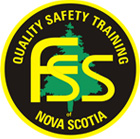Skidder Operator Crushed by Fuel Truck
Hazard Alert
Skidder Operator Crushed by Fuel Truck While Refuelling his Skidder
A grapple skidder operator parked his machine close to a fuel truck supplied by his employer and prepared to refuel it. The fuel truck was parked in gear with the parking brake engaged. When the operator leaned into the cab of the fuel truck to start it, the truck lurched forward and crushed him against the skidder. The operator was taken to hospital where he was pronounced dead several hours later.
WHY DID THIS HAPPEN?
A Ministry of Labour investigation found that although the fuel truck’s parking brake was engaged and should have prevented the truck from moving, the brake had not been properly maintained. When the truck started to move forward, it pinned the skidder operator between the truck and his skidder.
Recommendations to Prevent a Recurrence
- “Know your machine” is a key safety concept for any heavy equipment operator in forestry. In this incident, however, the skidder operator would not have had any way of knowing that the parking brake of the fuel truck supplied by the employer was defective and presented a deadly hazard to him as he stood between the truck and his skidder. The danger was magnified by the fact that the skidder operator reached in to start the fuel truck instead of getting into the truck to start it, which would have kept him out of harm’s way.
- Section 25(1)(b) of the Occupational Health and Safety Act states that it is the duty of the employer to ensure that the equipment, materials and protective devices provided by the employer are maintained in good working order.
- Uneven terrain is a constant factor in the bush that complicates the safe operation of any vehicle and even makes work on foot more hazardous. A general safety rule in the bush is to try to avoid parking on inclines. Since this is not always possible or practical, vehicles parked on an incline—especially wheeled vehicles must be properly secured and/or blocked to prevent any unwanted movement.
- Fuel trucks used in logging operations should be on the list of machines to be examined at the start of every working day to ensure that critical operating functions and safety features are in good working order. Checking the brake systems of all vehicles, wheeled or tracked, must be a top priority. If a fuel truck can’t be started remotely from a safe distance, it should be started from inside the truck.
